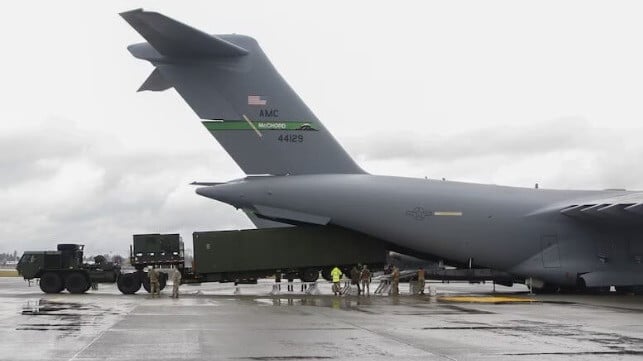U.S. Challenges China's Ambitions With Exercises in S. China Sea

The Philippines and the United States are planning to stage a naval exercise in the South China Sea next week, drawing strenuous objections from China. While this has happened many times before, this time will be different: part of the maneuvers will take place in the Philippines' exclusive economic zone, and will challenge China's extralegal maritime claims in the South China Sea.
China claims most of the South China Sea as its own, including large parts of its neighbors' EEZs. The Philippines is at the front lines, and has refused to give up a contested outpost at Second Thomas Shoal, despite vigorous Chinese efforts to enforce a blockade. Several Philippine servicemembers have been injured in standoffs between Chinese and Philippine coast guard vessels, prompting stern warnings from the U.S., which has a mutual-defense treaty with Manila.
The drills will involve amphibious assault maneuvers to simulate the armed recapture of two islands - one off the north end of Luzon and one off Palawan - and then emplace the U.S. Army's precision-guided HIMARS (High Mobility Artillery Rocket System) for live-fire drills. The U.S. Air Force will also work with the Philippines to sink a defunct target vessel - in this case, a former Philippine Navy oiler that happens to have been built in China. (The selection of a Chinese-built ship was not intentional, the Armed Forces of the Philippines says.). It will be the second joint sinking exercise between the two partners.
The U.S. Army has also moved in a Mid-Range Capability (MRC) missile system to northern Luzon. The MRC has the ability to launch Tomahawk land-attack cruise missiles and SM-6 air defense / antiship missiles. The Army did not specify the payload, but if carrying Tomahawks, the system could reach mainland China or the archipelago of Chinese-occupied islands in the South Chin Sea. The one-launcher deployment is a symbolic test, but a meaningful one: it appears to be the first time that the United States has deployed a ground-based Tomahawk launch platform since the early 1990s, when a treaty banning ground-launched cruise missiles phased into effect. The U.S. withdrew from the treaty in 2018, citing the need for a weapon like the MRC to deter Chinese expansionism.
The Chinese government expressed "grave concern" about the deployment. "China strongly opposes the US deploying medium-range ballistic missiles in the Asia-Pacific and strengthening forward deployment at China’s doorstep," warned Chinese foreign ministry spokesman Lin Jian on Thursday. "The Philippines needs to think twice about being a cat’s paw for the US at the expense of its own security interests, and stop sliding down the wrong path."

that matters most
Get the latest maritime news delivered to your inbox daily.
“It is China’s excessive maritime claims and aggressive behaviour, including its militarization of reclaimed features, that are undermining regional peace and stability and raising tensions," said the Philippine foreign ministry in a statement.
The Philippines is also arming up with its own long-range capabilities. Its first test with the South Korean-built C-star antiship missile will happen next week, and it will be taking a long-awaited delivery of the Indian-built Brahmos supersonic antiship missile within a week's time.
